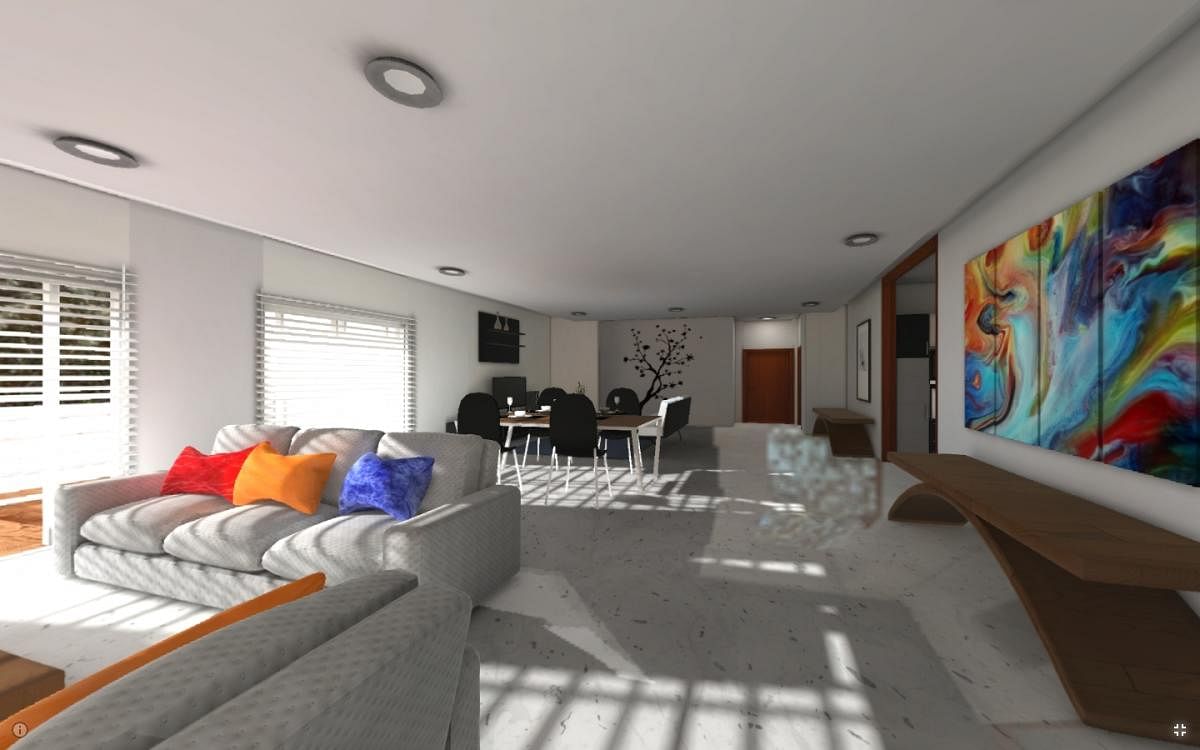
With people hesitating to step out, the real estate sector is offering clients virtual tours of properties up for sale.
Leen Thobias, founder, P4Panorama, has been working in virtual reality for 15 years. He uses Real-Time Communications (RTC), a technology developed by Google to create virtual experiences.
“It allows one to give guided tours, with the client and the salesperson present at the same place virtually, even if they are not in the same place physically,” he says.
A few years ago, he had only two or three real estate companies as clients. He now caters to 20. The shift is significant, he says.
“How many people knew about QR codes before the pandemic? Now even your roadside tea stalls have them. People are far more receptive to new technology than a year ago,” he says.
Virtual reality entered India about five years ago, but its growth has been slow. While gaming and medical education have embraced technology, real estate has trailed by a long way.
Rajesh Srkanth Vyas, managing director of Pixerio, a company that works with virtual and augmented reality, says inquiries have gone up but few have translated into projects.
Virtual reality tours would be beneficial to both buyers and builders. “The video tours, unlike virtual tours, don’t give you an idea of space and depth. How would you know if the house is spacious enough to fit that sofa, or if there is enough room for your dog to run around in,” says Hemanth Velury, CEO, VirtualSpaces.
Builders will no longer have to rely on constructing a model apartment to show prospective buyers. “Apartment complexes these days have at least 100 flats, and each has a different floor plan. The model apartment would only indicate the structure of a few of them,” he says.
The cost of building a model apartment, usually demolished at the end, would be significantly higher than the cost of getting a virtual reality model done, he explains.
Augmented reality, Rajesh says, is more popular than virtual reality. “This allows 3D modelling, and a 360 degree view of all facilities. Virtual reality allows a prospective client to virtually be present at the place,” he says.
For virtual reality to be accessible, people would need a VR device at home.
“VR headsets are not manufactured here. We have to import them from abroad. So, people are not used to them,” says Hemanth.
However, he believes it is only a matter of time before VR takes off in India. “When Apple introduced a touchscreen phone in 2007, people were reluctant. Now look, all phones are touchscreen,” he says.
When virtual reality came to India many big players tried it, but the audience was not interested, says Rajesh. The technology would only be accessible to builders with deep pockets and hence would address only upper-middle class and upper-class buyers, he says.
Virtual vs augmented
Augmented reality (AR) adds digital elements to a live view to create an artificial reality. You can experience AR with a smartphone or with special hardware. For example, the game Pokemon Go.
Virtual reality (VR) creates a complete immersion experience that shuts out the physical world. You need to use devices such as HTC Vive, Oculus Rift or Google Cardboard for this.